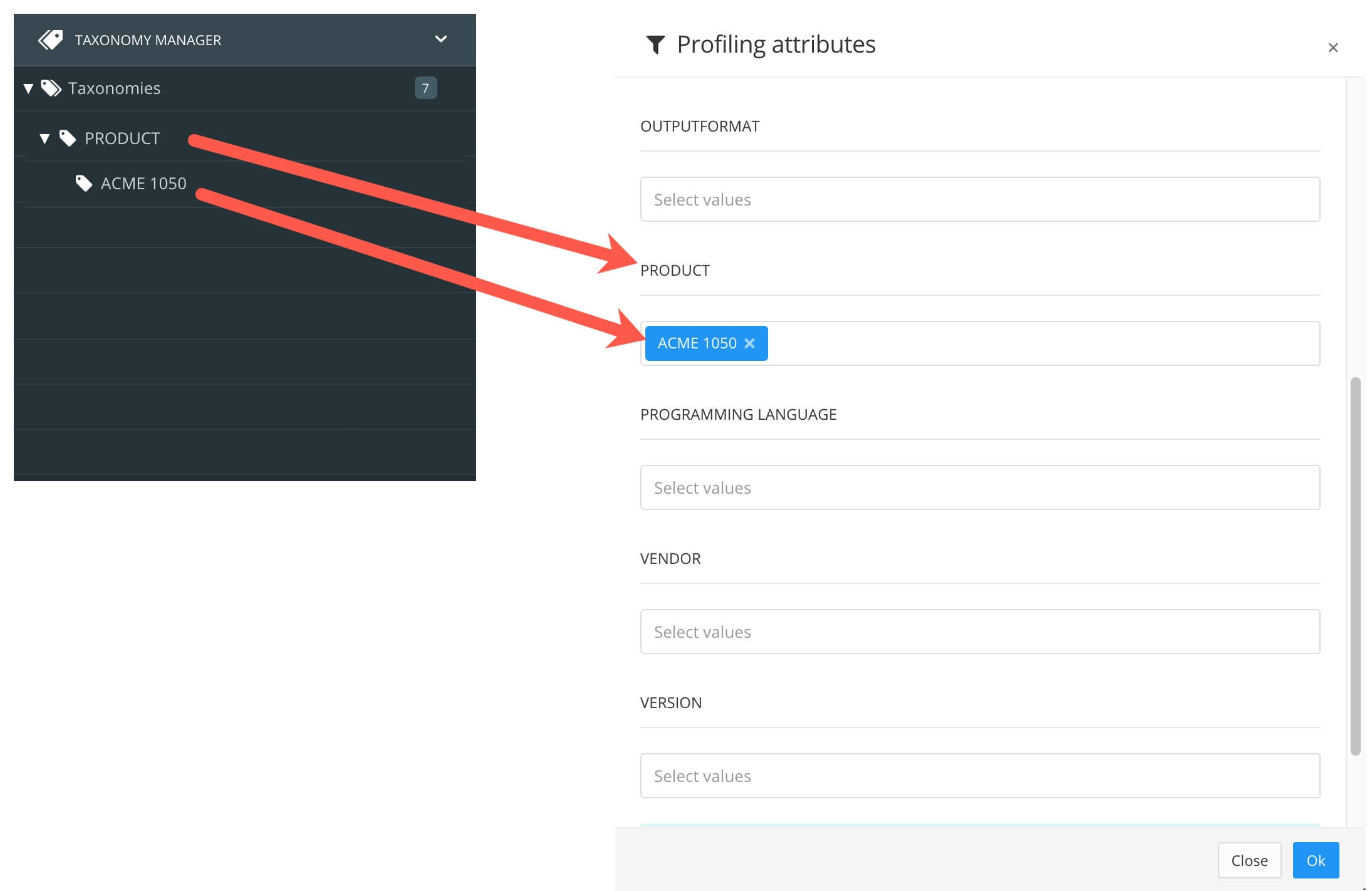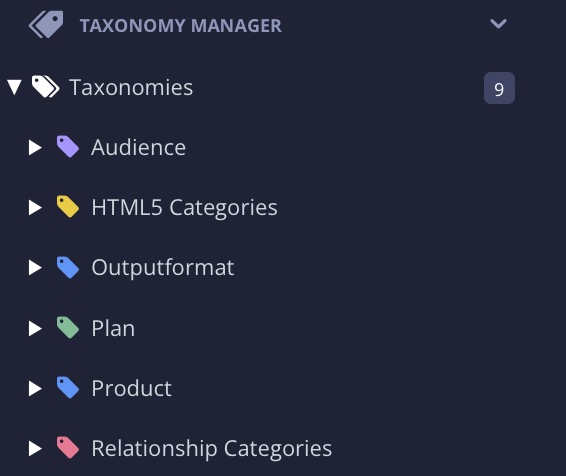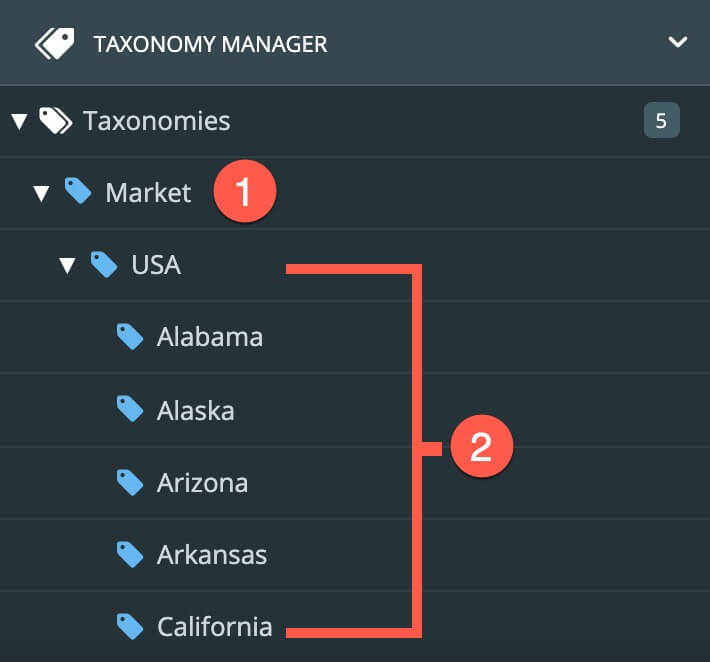Set Up the Taxonomy Tags
When you have added the filter values you need to Paligo, you Create Taxonomy Tags to mark your content for filtering.
You should create a taxonomy tag to represent:
-
Each filter attribute that you want to use. The filter attributes define the type of filter, for example, PRODUCT.
-
Each filter value that you want to use. The filter values define the condition, for example, ACME 1050 could be a condition for a PRODUCT filter.
The filter value tags have to be at a lower-level than the filter attribute tags in the taxonomy hierarchy.
The taxonomy tags you create need to have the same names as the filters and filter values that they represent.
For example, if you have a topic that is only relevant to an "ACME 1050" product, you could use an xinfo:product filter. For this, you would create a tag called "product" and then add a lower-level tag for "ACME 1050". (When setting the taxonomy tag names, do not include the xinfo
prefix).
 |
Note that the taxonomy tags for filter attributes should be named to match the filter attribute name.
To set up taxonomy tags for filtering:
-
Select the Taxonomy Manager in the Content Manager to open the structure.


-
Create Taxonomy Tags for the Filter Attributes and the filter values needed.
-
For filter attribute tags, the tag name has to match the attribute name (but do not include any
xinfoprefix). For example, if you want a taxonomy filter for thexinfo:marketfilter attribute, create a tag named:market. -
For filter value tags, set the name to match the value. For example, if you have a
marketfilter with a value of "USA", the taxonomy tag for this should also be named "USA".
-
-
Arrange the taxonomy tags, by drag and drop, into a logical hierarchy.
The filter attribute tags must be the "parent" and the value tags must be "children" in the hierarchy.
-
Filter attribute tags are at the highest level (below the taxonomies tag, but above all other tags)
-
Value tags are at a lower level than the filter attribute that they relate to.

In the image "Market" (1) is the filter attribute tag. All of the other tags are filter value tags (2). Note that you can have many levels of filter value tags, so that you can have greater control when filtering.
-
Tip
When you have set up the taxonomy tags, you can Apply Taxonomy Tags to Topics.